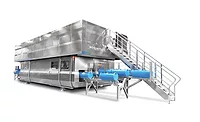HPP: Hire a toller or buy equipment?
Knowing the pros and cons of both sides of the HPP coin can help food and beverage processors make an educated decision
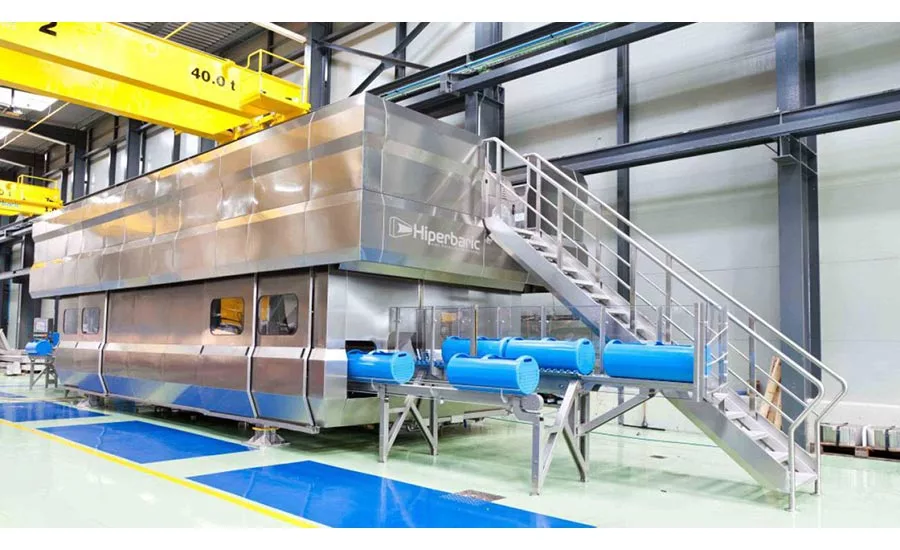
High pressure processing can be used to produce foods and beverages with an extended shelf life that meets consumer demand for natural, fresh-tasting foods with no preservatives. Photo courtesy Hiperbaric
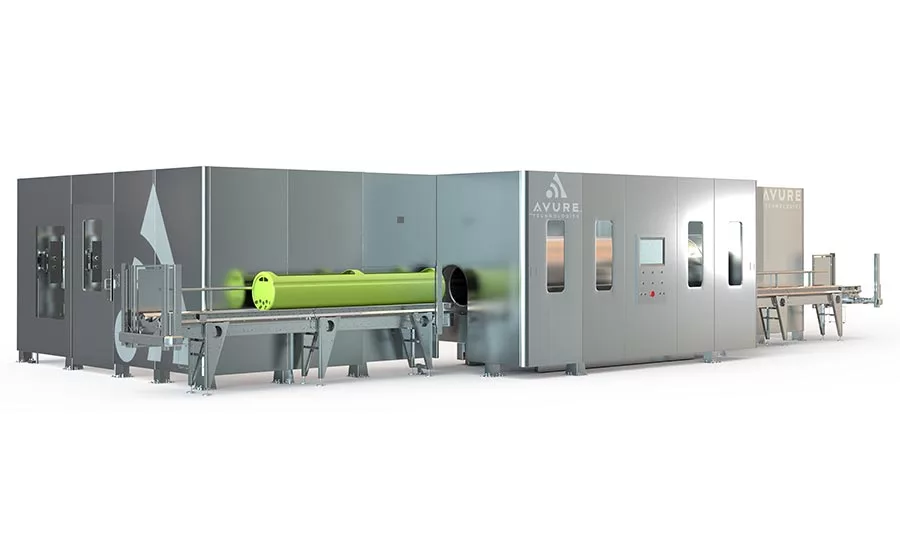
High pressure processing offers advantages that leave food and beverage processors with two choices to achieve an end product that has been HPP’d—use a toller or buy the equipment. Photo courtesy JBTAvure
We know that high pressure processing can be used to produce foods and beverages with an extended shelf life that meets consumer demand for natural, fresh-tasting foods with no preservatives (See Food Engineering, “Novel No More,” October 2020, page 46). These advantages leave food and beverage processors with two choices to achieve an end product that has been HPP’d—use a toller or buy the equipment.
“Both options are economically viable,” says Roberto Peregrina, chief scientific technologist at Hiperbaric. “It all comes down to the mid-long term strategy of each company.” Tolling gives the ability of focusing resources to other areas of the business without necessarily having to tie up capital to buy an HPP unit. He says that this way, companies are able to focus more on the front-end of the business (i.e., marketing/sales) rather than the nitty-gritty of operations.
It also gives a quick start to those companies testing market concepts. “Tolling also gives the ability to understand the dynamics of HPP and prepare companies for the next step, which is owning your unit,” he says.
According to a report from Molidor Intelligence titled “Clean label ingredient market—Growth, Trends, COVID-19 Impact, and Forecasts (2021-2026),” the clean label ingredients market is projected to grow at a CAGR of 6.75%. It is no surprise, then, that the worldwide market for HPP equipment is expected to grow at a CAGR of roughly 11.7% and reach $850 million by 2024, up from $490 million in 2019, according to an industry report titled, “Global High-Pressure Processing Equipment Market 2019 by Manufacturers, Regions, Type and Application, Forecast to 2024.”
Kevin Kennedy, North American sales manager at JBTAvure, says the pros for using a toller include no capital expenditure for HPP equipment or building infrastructure and immediate access to HPP processing—no waiting for machine delivery or building construction. He also says that additional services are available, including some upstream processing, kitting/assembly, tempering, coding, packaging, cold storage and distribution when using a toller. If a processor has seasonal products, Kennedy says that using a toller affords the use of HPP processing only when needed. There are no maintenance concerns and processors can have peace of mind when it comes to processing redundancy (multiple machine locations).
Of course, where there are pros, there must be cons. Kennedy says that using a toller can have higher costs, including the HPP processing itself, logistics and transportation. Lack of internal control; distance from product manufacturing (locations); availability of HPP processing/capacity (backlogs); and potential quality control issues with shipping/handling also are concerns to consider.
With regard to a processor buying its own equipment, Peregrina says that bringing HPP in-house definitely helps companies minimize all logistical aspects that the nature of tolling comes with, as well as streamlining operations and revenue. “Having full access to the technology gives companies the ability to test concepts at will,” he says.
Kennedy adds that the pros to bringing HPP in-house include lower HPP processing costs; no waiting for HPP machine availability; lower freight costs; in-house quality control; no product double handling; and automation to lower labor costs. He notes the cons can include an initial capital expenditure for HPP equipment and building infrastructure; ongoing maintenance attention and costs; lack of redundancy with only one machine; and labor required for product loading/unloading.
CASE BY CASE
Some companies begin small and outsource the HPP part of the process, with the hope they will eventually growing large enough to bring an HPP machine in-house and maybe become tollers themselves, servicing their surrounding area. Others choose to buy HPP equipment right off the bat and use the technology solely for their own products.
Intermountain HPP, for instance, originated in late 2019 to service the HPP needs of its juice company and to toll for other manufactures as a way to utilize excess capacity and to offset the expense.
The founder of Fresh Innovations learned about HPP more than 20 years ago as he was looking for a way to keep his avocados and guacamole fresher, longer. When he discovered how HPP could help avocados maintain their freshness longer without adding chemicals or preservatives, he purchased a machine and the rest is history.
Safety Fresh Foods came about when its Healthy Roots juice business was utilizing a toller during the first year of production. They found that being a small customer at a tolling operation presented some unique challenges, both logistically and financially, and this is what led them to start Safety Fresh Foods.
Great Lakes HPP and Food Innovation Center began as a salsa maker and utilized a toller while they awaited the arrival of their HPP machine. The company became a toller itself and has all the infrastructure needed to install its second line.
Texas Food Solutions started as a manufacturer of Perfect Fit ready meals and wanted to find a way to keep selling fresh, clean label meals over a larger area. They redeveloped as an HPP product and started using a toll processor. Once volumes grew, it made sense to transition to owning a machine. While looking into that, they realized that had a unique skill set and capability, so they decided to open a tolling operation as a new venture, and Texas Food Solutions was born.
New Mexico Fresh Foods is a social enterprise committed to growing the local food economy of New Mexico by bringing new food processing technology to Albuquerque. They purchased Verde Food Company, which manufactures premium cold-pressed juice, many of the ingredients for which are grown by local farmers, to be the backbone of its cold-packaging and private labeling offerings. They are the first HPP tolling company in the Southwest and the only commercial manufacturer of cold-pressed hemp juice.
Q&As with representatives from each of the above mentioned processors can be found by clicking on the links below. All Q&As have been edited for style, length and clarity.
 Thomas Kreitlow is CEO at Intermountain HPP, Bountiful, Utah
Thomas Kreitlow is CEO at Intermountain HPP, Bountiful, Utah
Sharon Spielman, Food Engineering (SS): Tell me briefly about Intermountain HPP and its place in the HPP marketspace.
Thomas Kreitlow (TK): Intermountain originated for two reasons: to service the HPP needs of my juice company, and to toll for other manufactures as a way to utilize excess capacity and to offset the expense. There was definitely a void in this market (the nearest machine was in California), and the Utah economy was booming, especially with small-scale food production companies.
SS: How many HPP machines do you have at Intermountain and when was installation?
TK: One, in November of 2019.
SS: When and why did Intermountain decide to purchase its HPP machines?
TK: I researched the HPP process and tolling for about a year prior to obtaining our machine. The primary driver was necessity. In order to scale my production operations (juice and hummus), I needed to improve shelf-life and to create a safer product. My only option would have been to ship the finished product to California for HPP processing and then have it shipped back, or dive in and bring HPP to the Intermountain West.
SS: Can you tell me about the cost analysis that helped when choosing which HPP machines to install.
TK: I think it’s kind of a catch-22. A company would either need to be at a sufficient volume level to justify the expense, or they would anticipate an increase in volume in the short run where it would no longer make sense to outsource their HPP needs, or they would need to supplement their revenue to justify the expense by taking on tolling customers as a means to fill capacity. Companies who choose the latter, like Intermountain HPP, are essentially taking a leap of faith that other manufacturers in their area will embrace the technology. Intermountain HPP had conducted some market analysis and had even approached potential clients to gauge whether a hybrid tolling model for the Utah market was sustainable. We determined it was.
SS: If you were to make lists of the pros and cons for both using a toller and owning HPP equipment, what would those lists look like?
TK: I think it depends on your market. If a toller exists in your area, then I think you would use them as long as their rates were something you could absorb into your pricing model. HPP equipment is expensive and operating it is essentially a whole other business. My other companies, which use Intermountain for their HPP services, did not have an alternate option. Intermountain was the only game in town and unless a company can transport goods to another market cost-effectively they must utilize their local provider.
Using a toller is always the best option unless it isn’t an option. Then a company must decide whether the expense of owning the equipment is justified. It’s a huge commitment, and unless a company is certain they can make a go of it they should avoid the endeavor. Most tollers (and this is my experience as well) will tell you that it takes a year or two to just break even. Like most things in business, it’s simply about numbers.
One con, at least for Intermountain, was that few producers in our market had knowledge of HPP or had embraced the technology. We essentially had to walk potential customers through the whole process, including compliance, packaging, logistics, etc. Getting folks onboard has been a challenge.
SS: What features were you looking for your HPP equipment to have?
TK: The only feature most companies are concerned with is vessel size. Does the machine have enough capacity to process specific demand for their company (and others, if they’re going into the tolling business)? Intermountain made mechanical and other improvements to their facility in case a larger machine at some point was needed.
SS: How did Intermountain choose the equipment they ultimately purchased?
TK: Intermountain chose to start small to allow the model to prove itself. We were actually looking for a used machine and it so happened Hiperbaric had a small machine available, so that was the direction we went. We are not at capacity with this machine yet.
SS: Did Intermountain install HPP exclusively to become a toller? Please tell me about how Intermountain got its start in HPP.
TK: Intermountain did start out to exclusively toll for local companies, but two of its customers were companies I owned with other individuals. The fact that I had involvement with two other companies which would (and did) benefit from local access to HPP did play a role in the decision. Given the production levels of those companies at the time of opening Intermountain, I knew there would be immediate revenue, which would minimize first-year losses. At that point it was just about getting word out that HPP was now available in Utah.
SS: Can you offer any stats (financial, efficiency-wise, production-value, etc.) for using a toller vs. installing HPP equipment?
TK: Not really. It’s honestly an economic decision and each company’s circumstances will be different. They will need to determine what makes sense for them.
SS: What were the biggest challenges when installing your HPP machines? How were these overcome?
TK: For us, the biggest challenge was location. Since we did not want to build we needed to find an existing industrial building with easy freeway access (since companies would be transporting to us) and some existing infrastructure. Heavy power supply is also important. We wanted to minimize our startup costs since in our market the model was unproven, and any capital costs we could divert could be utilized as working capital. We must have looked at 50 locations before we found our spot.
SS: If you had to do it over, would you change anything?
TK: I would try harder to line up more customers prior to launch. I was somewhat naive in thinking companies would flock to us since we were the only tolling company in the Intermountain West. Sort of “if you build it, they will come.” It hasn’t worked out that way. We’ve had to work just as hard for customers as anyone else.
SS: What advice might you offer other companies that are thinking about purchasing their own HPP equipment vs. using a toller?
TK: Make sure you do your homework, and make sure you understand what you’re getting yourself into. Also, make sure there’s enough support in your market. If there’s a toller available, use them for as long as possible before going out and purchasing a machine.
SS: Anything else you’d like to share?
TK: I would say that in most situations anyone thinking about obtaining a machine will probably weigh whether tolling, as an additional revenue stream, might make sense. A lot start out this way and at some point move in one direction or the other. By that, I mean they either focus more on tolling (and maybe even some co-packing or private label), or their own demands fill capacity and they no longer need the additional revenue, essentially cutting off their tolling customers. I know this has happened in at least one market. In addition, there may be some compliance regulations which could dissuade someone with a machine from allowing another company to bring their products into their facility just for tolling. That could get tricky too.
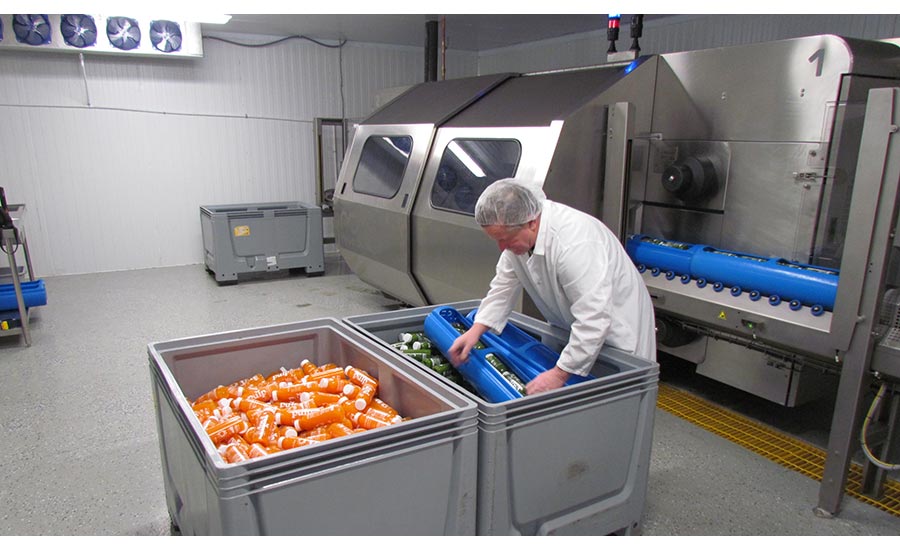 Intermountain HPP purchased a small, previously owned Hiperbaric machine to get started in the tolling business. Necessity was the driving factor for them. Photo courtesy of Intermountain HPP
Intermountain HPP purchased a small, previously owned Hiperbaric machine to get started in the tolling business. Necessity was the driving factor for them. Photo courtesy of Intermountain HPP
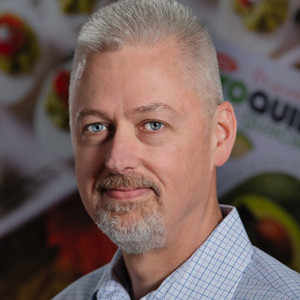 Jeff Morris is president of Fresh Innovations LLC, Rhome, Texas
Jeff Morris is president of Fresh Innovations LLC, Rhome, Texas
Sharon Spielman, Food Engineering (SS): Tell me briefly about Fresh Innovations and ¡Yo Quiero! brands.
Jeff Morris (JM): Fresh Innovations, LLC, is the parent company of ¡Yo Quiero! brands. At Fresh Innovations, we create and manufacture avocado and guacamole products as well as salsa, queso and cream cheese-based dips. The owners of the company have over 100 years combined experience in the avocado and dip categories, and they’ve come together, again, to provide excellent products for retailer and food service operations.
SS: I understand you have always used high pressure processing for your avocado and guacamole products. How did you learn of HPP?
JM:The founder of our company learned about HPP over 20 years ago as he was looking for a way to keep his avocados and guacamole fresher, longer. When he discovered how HPP could help avocados maintain their freshness longer—without added chemicals or preservatives—he purchased a machine and the rest is history.
SS: Had you ever considered using a toller? Why or why not?
JM: We view toll processors as a way to prove out new product concepts. Proving the market acceptance of new products is critical in our decision-making process before purchasing an HPP machine or increasing our HPP capacity with an additional machine.
SS: Did you start off with one HPP machine and grow from there?
JM: We started with a couple of machines, and as the machines grew and increased their throughput, we were able to move to larger machines.
SS: What features were you looking for your HPP equipment to have? How did Fresh Innovations choose the equipment and the supplier they ultimately purchased?
JM: Throughput, service, reliability and spare parts cost are key factors we look at for choosing our HPP equipment.
SS: Is Fresh Innovations a toller for other processors? If so, was this always a part of the business model? If not, why not?
JM: We are currently not a toll processor but have explored this in the past. We are always open to being a toller; however, it depends on the products and if they fit into our current operation.
SS: Can you share information on the ROI for an HPP machine?
JM: We currently do not evaluate our purchases using an ROI as it is subjective when you view the food safety benefits. One recall could potentially pay for the cost of an HPP machine.
SS: What were the biggest challenges when installing your HPP machines? How were these overcome?
JM: Overall, there are not too many challenges to install an HPP machine. Hiperbaric engineers provide lots of support so the install is seamless.
SS: If you had to do it over, would you change anything? What advice might you offer other companies that are thinking about purchasing their own HPP equipment?
JM: I can think of nothing that would need to change. There have been major improvements in the past 10 years to compact machine design, transportation and installation to provide a smooth installation. I would tell others to ensure they purchase the machine that is sized according to their current and future production capacity and understand their packaging mix (flexible vs. semi-rigid). Hiperbaric provides tools that can help with this decision based on a variety of different packaging types and the throughputs to expect.
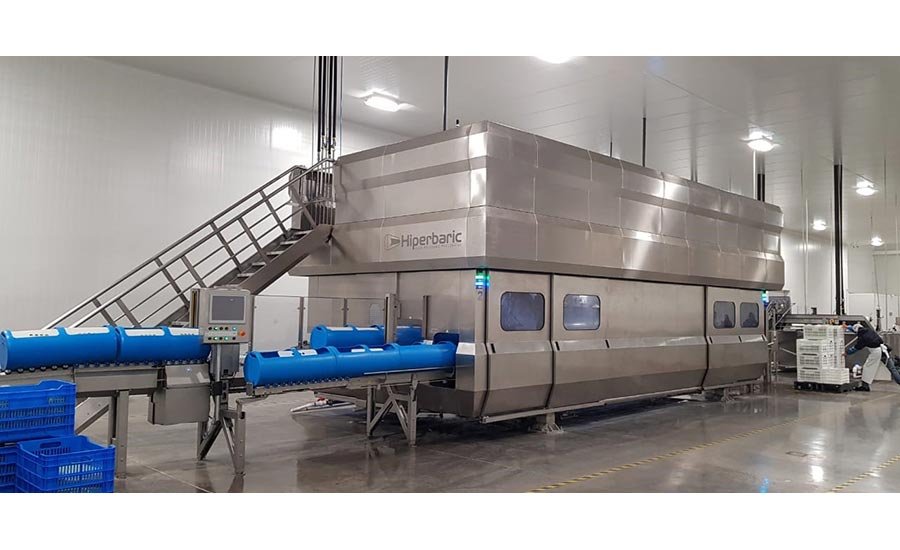 Throughput, service, reliability and spare parts cost are key factors that Fresh Innovations considered when choosing its HPP equipment. Photo courtesy of Fresh Innovations LLC
Throughput, service, reliability and spare parts cost are key factors that Fresh Innovations considered when choosing its HPP equipment. Photo courtesy of Fresh Innovations LLC
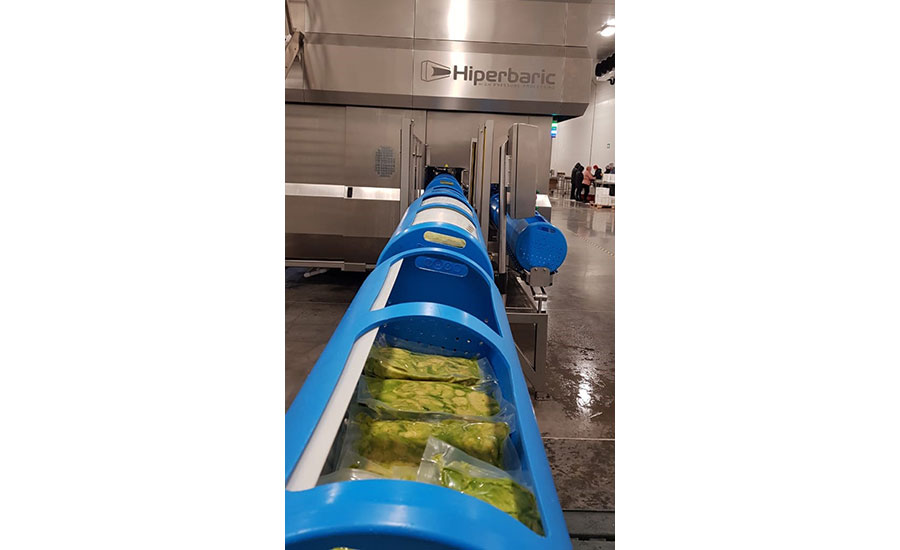 Fresh Innovations uses HPP to create and manufacture avocado and guacamole products as well as salsa, queso and cream cheese-based dips. Photo courtesy of Fresh Innovations LLC
Fresh Innovations uses HPP to create and manufacture avocado and guacamole products as well as salsa, queso and cream cheese-based dips. Photo courtesy of Fresh Innovations LLC
 Mark Maglio is director of Plymouth, Wis.-based Safety Fresh Foods, an HPP toller, and Healthy Roots, a juice processor.
Mark Maglio is director of Plymouth, Wis.-based Safety Fresh Foods, an HPP toller, and Healthy Roots, a juice processor.
Sharon Spielman, Food Engineering (SS): Tell me briefly about Safety Fresh Foods and Healthy Roots brands.
Mark Maglio (MM): Safety Fresh Foods is a provider of high-pressure processing to the food and beverage industry, located in Plymouth, Wis. We focus on bringing innovation and customer service to an otherwise commoditized market. Our goal is to help clients develop custom solutions that best fit their product and budget.
Healthy Roots is a cold-pressed juice company, focused on making consumption of fruits and vegetables delicious and universally accessible to as many consumers as possible. We very intentionally source the freshest produce to ensure peak flavor and nutrition in each bottle.
The Maglio family is proud to own both Safety Fresh Foods and Healthy Roots. This vertically integrated model allows us to provide the best value and quality to our customers.
SS: I understand you purchased an HPP machine for your products. Was Healthy Roots utilizing a toller for their products prior to this HPP installation? If so, for how long?
MM:Yes, Healthy Roots was utilizing a toller during the first year of production. We found that being a small customer at a tolling operation presented some unique challenges, both logistically and financially. This experience is what led us to start Safety Fresh Foods. We strive to provide cost-efficient solutions to every customer, regardless of size.
SS: When did the company decide to purchase its own HPP machine?
MM: Our family started Safety Fresh Foods in 2018. The increasing volume for Healthy Roots products, as well as continued demand for HPP services, drove our decision.
SS: Tell me about the cost analysis (if there was one) that made the company choose to purchase their own HPP machine.
MM: We looked at the purchase of equipment as a two-fold investment: we could reduce our operational costs for Healthy Roots, while Safety Fresh could simultaneously generate a positive return in a growing HPP market. The volume for Healthy Roots alone did not justify the purchase of an HPP machine. However, our proximity to a number of great food manufacturers in the Midwest allows us to fill those volume gaps with outside products.
SS: If you were to make lists of the pros and cons for both using a toller and owning HPP equipment, what would those lists look like?
MM: A toller allows the customer to access HPP without the major financial investment in equipment. Similarly, the customer’s product is being treated by professionals who are educated and trained in HPP services. While owning HPP equipment is an expensive undertaking, we look at it as an investment in a growing business. Safety Fresh can generate revenue for us, while also providing the flexibility to treat our own products on an as needed basis. Our tolling partners are equally as important to the long-term success of the business as our Healthy Roots products.
SS: What features were you looking for your HPP equipment to have? How did Safety Fresh Foods choose the equipment they ultimately purchased?
MM: From an equipment perspective, the Avure AV-X allows us the opportunity to expand capacity and efficiency with additional pump skids. We can essentially create redundancy within our operation by utilizing multiple sets of pumps.
Equally important to us was the team at Avure. We’ve been given tremendous access to the food science team, including Dr. Errol Raghubeer. They act as a true partner to us and our clients, from technical data to innovative solutions for our prospects and customers.
SS: Since installing your own HPP equipment, I understand Safety Fresh Foods is now a toller. Was this a factor when making the decision to purchase a machine?
MM: The opportunity to partner with other great food manufacturers in the Midwest was always a factor for us. We were optimistic that the Healthy Roots line of products would continue to grow, but acting as a toller allows us to continue to grow and bring scale to all of our customers.
SS: Can you offer any stats (financial, efficiency-wise, production-value, etc.) since installing your own HPP machine? Can you share information on the ROI for an HPP machine?
MM:The most important stat we can provide is that we have been able to bring down the overall cost of HPP services by 10-20% for our customers—Healthy Roots included. We do this by generating solutions, not simply forcing their products into our model. We approach each project as its own P&L, and provide our customers with an a la carte model to select which services they would like us to provide.
SS: What were the biggest challenges when installing your own HPP machine? How were these overcome?
MM: As with any construction project, there are a number of facets that all need to come together at the right time to keep the installation moving. We implemented a weekly call with all contractors involved to facilitate communication and proactively troubleshoot any gaps on the horizon. We also maintained very transparent lines of communication with our customers to ensure that they were engaged with the process and part of our success from Day 1.
SS: If you had to do it over, would you change anything? What advice might you offer other companies that are thinking about purchasing their own HPP equipment?
MM: We’ve learned a lot through this process. The experience and knowledge we’ve gained will be instrumental as we look to additional machines and locations. I would advise others who are considering purchasing their own equipment to understand that it really is a business within their business. It needs to be treated as such, with proper management and attention paid to it. Productive discussions with a toller about how to create the best partnership for all parties will often prove to be the better solution, both long-term and short-term.
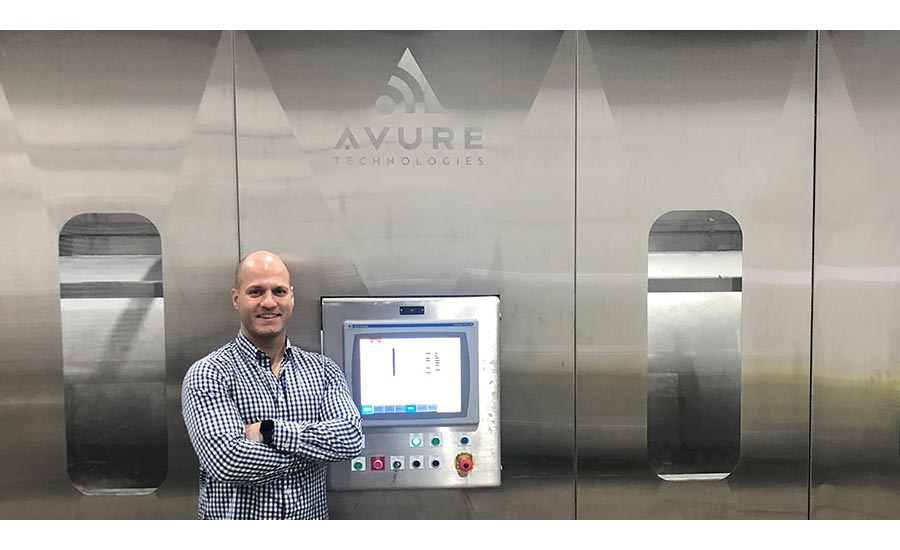 The Avure AV-X allows Safety Fresh Foods to expand capacity and efficiency with additional pump skids, creating redundancy by utilizing multiple sets of pumps. Photo courtesy of Safety Fresh Foods
The Avure AV-X allows Safety Fresh Foods to expand capacity and efficiency with additional pump skids, creating redundancy by utilizing multiple sets of pumps. Photo courtesy of Safety Fresh Foods
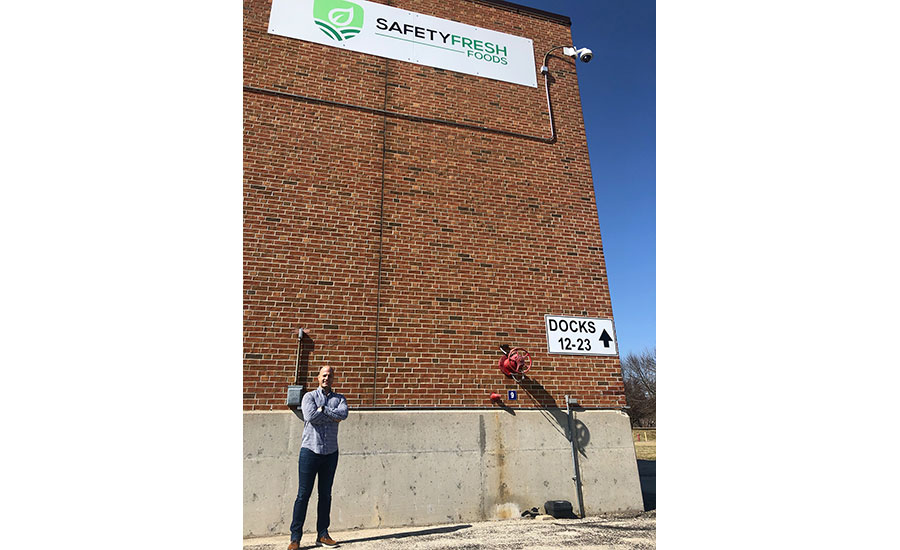 Safety Fresh Foods provides high pressure processing to the food and beverage industry. Mark Maglio says, “We focus on bringing innovation and customer service to an otherwise commoditized market.” Photo courtesy of Safety Fresh Foods
Safety Fresh Foods provides high pressure processing to the food and beverage industry. Mark Maglio says, “We focus on bringing innovation and customer service to an otherwise commoditized market.” Photo courtesy of Safety Fresh Foods
 Dave Zilko is Co-CEO of Great Lakes HPP, Taylor, Mich.
Dave Zilko is Co-CEO of Great Lakes HPP, Taylor, Mich.
Sharon Spielman, Food Engineering (SS): Tell me briefly about Great Lakes HPP and your Garden Salsa brand, which I understand was eventually sold.
Dave Zilko (DZ): Jack Aronson, a world champion softball player, founded Garden Fresh Gourmet in the back of his bankrupt restaurant just outside of Detroit. Literally out of desperation, Jack was trying to pay his electric bill, he pulled out a five gallon bucket and peeled some onions by hand and created, in roughly 15 minutes, what is today Garden Fresh Artichoke Garlic Salsa.
Jack and I became partners shortly thereafter and we, along with Jack’s wife Annette, and a lot of other very talented people, proceeded to build Garden Fresh into the No. 1 brand in North America before selling in 2015 to a Fortune 500 company for almost a quarter billion dollars.
Our mantra was that it was more important to be the best rather than the biggest, and to maintain our flavor profile never stopped making Garden Fresh Salsa the exact way Jack did in the back of that bankrupt restaurant; peeling onions by hand and in five gallon buckets, even though by the time we sold the company we were producing 85 tons of fresh salsa a day.
I wrote a book about our adventures. Wiley & Sons distributed it nationwide in May of 2016.
SS: When creating your salsa brand, did you use a toller or did you move right into HPP? What was the impetus for opening Great Lakes HPP?
DZ:At Garden Fresh Jack was a true visionary with respect to HPP’s potential, and we got our first Avure HPP machine in 2008. Between then and the time we sold to Campbell’s Soup Company, we would order two more.
Our Garden Fresh Gourmet Salsa was all-natural, thus HPP prevented fermentation and extended our shelf life. We were also able to offer retailers such as Whole Foods an all-natural hummus, via HPP, and this was a true point of differentiation for us.
We, for a very short time, employed the services of an HPP toller while our first Avure machine was on order. At Garden Fresh, our volume was sufficient to support multiple HPP machines, but there’s no getting around the fact that HPP is a capital intensive process.
Thus, the value of engaging with tolling services is that companies can enjoy the benefits of HPP, and offer those differentiating benefits to their customers, without the upfront capital expense.
SS: What features were you looking for your HPP equipment to have? How did Great Lakes HPP choose the equipment they ultimately purchased?
DZ: In 2008, HPP was still in its infancy. It was critical to partner with an HPP equipment supplier who could assist and educate Garden Fresh on all aspects of HPP technology. The needed resources ranged from installation requirements, machine commissioning, operation and maintenance training, regulatory requirements, and product development support. Avure met all of these with the added benefit of being a U.S.-based company.
One aspect Great Lakes took into consideration was the size of the machine and the annual HPP capacity it could generate. Avure’s largest machine, the AV-X, has the unique feature of being designed in a modular fashion that allows for increasing machine output by adding additional intensifiers (the engines that creates pressure) to speed up cycle times, thus increasing capacity. This allows for a smaller up front capital investment with the ability to increase capacity in the future.
SS: Can you offer any stats (financial, efficiency-wise, production-value, etc.) since becoming an HPP toller? Can you share information on the ROI for an HPP machine?
DZ: At Garden Fresh it was important to Jack that our HPP machines be backed by not only a high level of service but also a best-in-class research resource. He found just that at Avure. All our Garden Fresh HPP machines were Avures, and sure enough our HPP machine at Great Lakes HPP is an Avure as well.
SS: What were the biggest challenges when installing your own HPP machine(s)? (How many machines does Great Lakes HPP have? If more than one, do they differ from one another?) How were these overcome?
DZ: Great Lakes had the advantage of past experience at Garden Fresh to help us understand the challenges of installing an HPP machine, but installation still has its challenges. The HPP machines can weigh in excess of 180,000 lbs. and require a significant amount of electric power when building pressure. The weight requires a concrete pad to be poured to handle the weight and proper soil compaction to ensure the pad remains level. Electrical needs will need to be evaluated to ensure enough power is available to cycle the HPP intensifiers. Great Lakes has one HPP line, but has installed all of the necessary infrastructure for an identical second machine.
SS: If you had to do it over, would you change anything? What advice might you offer other companies that are thinking about purchasing their own HPP equipment?
DZ: The biggest challenge for Garden Fresh when we first started HPPing our salsa and hummus was the learning curve; it was substantial with respect to employing the proper packaging and pressurized hold times. The best advice we could give is to take advantage of the resources an HPP machine manufacturer such as Avure provides; they dramatically accelerated the ramp-up process for us.
SS: Since installing your own HPP equipment, I understand Safety Fresh Foods is now a toller. Was this a factor when making the decision to purchase a machine?
DZ: The opportunity to partner with other great food manufacturers in the Midwest was always a factor for us. We were optimistic that the Healthy Roots line of products would continue to grow, but acting as a toller allows us to continue to grow and bring scale to all of our customers.
SS: If you were to make lists of the pros and cons for both using a toller and owning HPP equipment, what would those lists look like?
DZ:The most important stat we can provide is that we have been able to bring down the overall cost of HPP services by 10-20% for our customers—Healthy Roots included. We do this by generating solutions, not simply forcing their products into our model. We approach each project as its own P&L, and provide our customers with an a la carte model to select which services they would like us to provide.
SS: What were the biggest challenges when installing your own HPP machine? How were these overcome?
DZ:
Pros for toller:
- Speed to Market—Tollers have installed capacity to react quickly to HPP needs.
- Technical Expertise—Tollers know the nuisances of product and packaging behavior through the system for HPP products.
- Known fixed costs—Manufacturers know their fixed HPP costs based the toller’s processing fee.
- Known regulatory requirements—Tollers know HPP and what role it plays into product manufacturing.
- Capital avoidance—HPP requires significant investment that can be avoided by using a toller.
- Equipment redundancy—Most tollers have multiple machines and/or alliances with other tollers in order to guarantee needed capacity in the event of equipment failure.
Cons for tollers:
- Cost for services—Self-manufacturing is less expensive than using a toller.
- Freight cost—The cost of freight to and from toller’s location.
Pros for self-manufacturing:
- Lower production cost—No toller’s margin.
- Extra freight avoidance—HPP processing in house.
Cons for self-manufacturing:
- Matching HPP throughout to manufacturing throughput—Different line speeds will require accumulation of product prior to or post HPP processing.
- Idle HPP machine due to product seasonality.
- Reacting to HPP machine downtime—HPP machines by their nature require a lot of maintenance and will have down time. Upstream manufacturing throughput may be effected.
- Large capital investment.
- Learning HPP technology—It takes time to learn how to run and efficiently maintain HPP equipment.
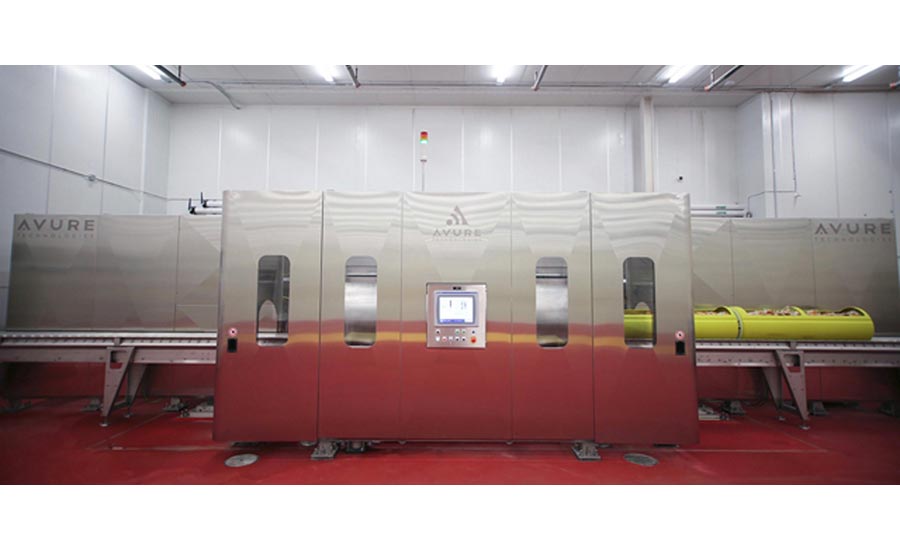 : Great Lakes took into consideration the size of the machine and the annual HPP capacity it could generate. Avure’s AV-X is designed in a modular fashion that allows for increasing machine output by adding additional intensifiers, which allows for a smaller up front capital investment with the ability to increase capacity in the future. Photo courtesy of Great Lakes HPP
: Great Lakes took into consideration the size of the machine and the annual HPP capacity it could generate. Avure’s AV-X is designed in a modular fashion that allows for increasing machine output by adding additional intensifiers, which allows for a smaller up front capital investment with the ability to increase capacity in the future. Photo courtesy of Great Lakes HPP
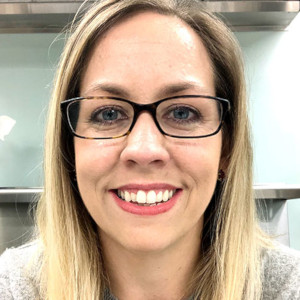 Jasmine Sutherland is president of Texas Food Solutions, Katy, Texas
Jasmine Sutherland is president of Texas Food Solutions, Katy, Texas
Sharon Spielman, Food Engineering (SS): Tell me briefly about Texas Food Solutions and its place in the HPP marketspace. Has TFS always been a toller?
Jasmine Sutherland (JS): Our HPP journey started as a manufacturer of Ready Meals. We had a company called Perfect Fit Meals and we were looking for a way to keep selling fresh, clean label meals over a larger area. We redeveloped as a HPP product and started using a toll processor. Once our volumes grew, it made sense for us to transition to owning a machine. While looking into that, we determined that we had a unique skill set and capability, so we decided to open a tolling operation as a new venture and Texas Food Solutions was born. TFS covers customers over the Southern US. We run a turnkey Product Development Center and specialize in helping customers get their products to market.
SS: How many HPP machines do you employ at TFS? When and why did TFS decide to purchase its HPP machines?
JS:We currently have two HPP machines (JBTAvure 350l & JBTAvure 25l) and are looking at adding a third this year (JBTAvure 525l). We have space in this operation for two more machines. The first machine was installed in 2015 and the second was installed in 2016.
SS: Can you tell me about the cost analysis that helped when choosing to purchase your own HPP machines.
JS: An HPP machine is a very large investment and tolling made sense for us for quite a while. When we got closer to filling more capacity than our local toller had available for us, it became obvious that we would need to invest in our own equipment. Tolling is great if it’s a process you don’t want to take on or don’t want to allocate capital to. I say this as a manufacturer and as a toll processor.
SS: If you were to make lists of the pros and cons for both using a toller and owning HPP equipment, what would those lists look like?
JS: HPP equipment is much harder to operate than a packaging line and is very capital intensive. The cost of ownership is high and the machine needs to be close to full for the decision to own one to make sense financially. There are, additionally, a lot of infrastructure costs attached. Yes, with owning a machine, your HPP cost per lb/unit is offset, but does the volume dictate that the difference makes sense for the bottom line of your operation?
SS: What features were you looking for your HPP equipment to have? How did TFS choose the equipment they ultimately purchased?
JS: We selected a JBTAvure 525l because of the size, access to spare parts, operating cost, flexibility in being able to modify the machine to run faster (we can add an entire skid if we choose), and transparent communication with the manufacturer when we need support.
SS: Did TFS install HPP exclusively to become a toller? Please tell me about how HPP became a part of TFS and how TFS became such a large HPP toller.
JS: The growth of our existing food business determined the need to invest in a machine ourselves. We have always had great relationships with processors in our area and it turned out others had a need for HPP in the Houston area, so we grew a business from the opportunity. We had wanted to own two HPP machines so we would have redundancy and opening a tolling operation gave us the ability to do so faster.
SS: Can you offer any stats (financial, efficiency-wise, production-value, etc.) for using a toller vs. installing HPP equipment?
JS: Every company and product is different in that determination and they are different in how they operate their HPP machine.
SS: What were the biggest challenges when installing your HPP machines? How were these overcome?
JS:Infrastructure is the biggest challenge to start. The machines are so heavy that they require a special slab. We made sure that we had the right team to put the pieces together.
SS: If you had to do it over, would you change anything? What advice might you offer other companies that are thinking about purchasing their own HPP equipment vs. using a toller?
JS:Using an HPP toller is a great way to minimize risk and save capital while growing a business or a new product line. The relationship between toller and customer is so important as their growth is tied to each other. Transparent communication makes for a smooth processing experience and even a useful transition once a toll customer decides to buy their own machine. You never know when you need back up. We have been fortunate to maintain great relationships with manufacturers that own machines even going as far as trading spare parts and maintenance help!
 Kelly Egolf is founder of Verde Foods and manager and CEO of New Mexico Fresh Foods, LLC, Albuquerque, N.M. Photo courtesy of Gabriella Marks
Kelly Egolf is founder of Verde Foods and manager and CEO of New Mexico Fresh Foods, LLC, Albuquerque, N.M. Photo courtesy of Gabriella Marks
Sharon Spielman, Food Engineering (SS): Tell me briefly about New Mexico Fresh Foods & Verde Foods brands.
Kelly Egolf (KE): New Mexico Fresh Foods is a social enterprise committed to growing the local food economy of New Mexico by bringing new food processing technology to Albuquerque. We purchased Verde Food Company, which manufactures premium cold-pressed juice—many of the ingredients for which are grown by local farmers—to be the backbone of our cold-packaging and private labeling offerings. Additionally, we are the first HPP tolling company in the Southwest and the only commercial manufacturer of cold-pressed hemp juice.
SS: I understand you purchased an HPP machine for your products. Was New Mexico Fresh Food utilizing a toller for their products prior to this HPP installation? If so, for how long?
KE:Verde Juice made the decision to begin using HPP on our cold pressed juices in 2017, only 18 months after opening our juice bar in Santa Fe. Being in a tourism-driven city meant that Verde was immediately inundated with shipping requests from all over the country for our juice line. Achieving a longer shelf life without compromising on quality was essential to begin distribution, and we quickly discovered HPP was the only option to do it all.
SS: When did the company decide to purchase its own HPP machine?
KE: In 2018, we launched our second equity campaign to open a $10 million HPP tolling facility. We knew there would be excess capacity on our HPP machine and we were keenly aware of the needs of local food producers to access preservation technology that did not rely on heat pasteurization or chemical preservatives. Our social commitment to our community makes it a natural fit to grow into the role of HPP tolling and cold-packaging for local food producers.
SS: Tell me about the cost analysis (if there was one) that made the company choose to purchase their own HPP machine.
KE: In our cost analysis, we included the cost of product lost to expiration. Once we calculated the value of the labor and food costs for juice we were pouring down the drain each week, we knew we were on to something. HPP treating our juice increased our shelf life by a factor of 30, which meant we could begin regional distribution and meet the food safety requirements for big retailers like Whole Foods and Albertsons. Not only are we able to scale up Verde Juice, but we’ve also been able to add new lines of private labeling, like fresh citrus juice for restaurants and hotels.
SS: If you were to make lists of the pros and cons for both using a toller and owning HPP equipment, what would those lists look like?
KE: There are several advantages to using a tolling company. A food manufacturer can continue to do what they do best—making amazing food. That means saving critical capital for product development and marketing and maintaining a smaller staff and lower overhead. It also means the smaller companies can increase their food safety and outsource the final CCP to a reputable HPP toller.
The primary disadvantages of working with HPP tolling is the transportation cost and the risk that brings to your company. Established HPP tollers are often booked up and don’t have a lot of flexibility in their schedules to accommodate last minute production changes. During COVID, with all of its supply chain and transportation disruptions, we found this to be a particularly challenging issue. Living in the Rocky Mountain region also means dealing with weather-related delays. There have been several days that our truck was stuck on the highway full of perishable product during a winter snowstorm and we missed our delivery window to our HPP toller. They always figured out how to accommodate us but it wasn’t always easy and it wasn’t always cheap to rearrange everything around a winter storm.
For companies that don’t have HPP tolling options nearby, contract manufacturing is a great way to make the most HPP offers without the downsides of the expense. It also may mean easier distribution to areas of the country that are otherwise cost-prohibitive to reach due to the high cost of refrigerated freight.
New Mexico Fresh Foods received several economic development grants in large part because it will grow the food economy of New Mexico. We are already have conversations with HPP juice and food manufacturers from both coasts seeking to use our co-manufacturing services and HPP is a central selling point to companies looking to relocate or expand into the Southwest region. Because we are positioned at the intersection of I-40 and I-25, we offer easy access for trucking lanes going in all four directions.
SS: What features were you looking for your HPP equipment to have? How did New Mexico Fresh Food choose the equipment they ultimately purchased?
KE: We visited several HPP facilities and interviewed a number of owners to compare manufacturers. In the end, we were swayed by Avure’s smaller footprint and the ability to scale the units up by adding intensifiers over time.
SS: Since installing your own HPP equipment, I understand New Mexico Fresh Food has become a toller. Was this a factor when making the decision to purchase a machine?
KE: Becoming an HPP toller was not the original intention. We first looked to acquire HPP for our purposes and co-manufacturing alone. As we did our research, however, we realized that operating as a tolling facility would not only help us bring in extra revenue, but it would bring new opportunities to grow food innovation across our state.
SS: Can you offer any stats (financial, efficiency-wise, production-value, etc.) since installing your own HPP machine? Can you share information on the ROI for an HPP machine?
KE:We aren’t prepared to share any of this information yet.
SS: What were the biggest challenges when installing your own HPP machine? How were these overcome?
KE:Site selection was our biggest challenge. HPP tolling requires easy access to the freeway for trucking and ample refrigerated storage space, so that clients can leave product at our facility either temporarily or as long-term cold storage. The vacancy rate for commercial space in Albuquerque was under 3% and we had to wait to find the right facility to meet our needs.
SS: If you had to do it over, would you change anything? What advice might you offer other companies that are thinking about purchasing their own HPP equipment?
KE:We had an 8-hour drive to reach our tolling facility and that was a true drag on the company’s growth for nearly three years. If I’d known how difficult it would be to get our tolling facility started, however, I may have decided to move our production closer to a tolling facility. That would have meant leaving New Mexico, so we are truly grateful to Bernalillo County and to the state of New Mexico for all they did to allow us to keep Verde Juice in the Land of Enchantment.
SS: Anything else you’d like to share?
KE:We understand what it is to the little company with big dreams of scaling up, and New Mexico Fresh Foods will not turn anyone away. We are committed to premium customer service to our clients and helping New Mexico companies overcome the barriers of growing up and being innovative.
Looking for a reprint of this article?
From high-res PDFs to custom plaques, order your copy today!





